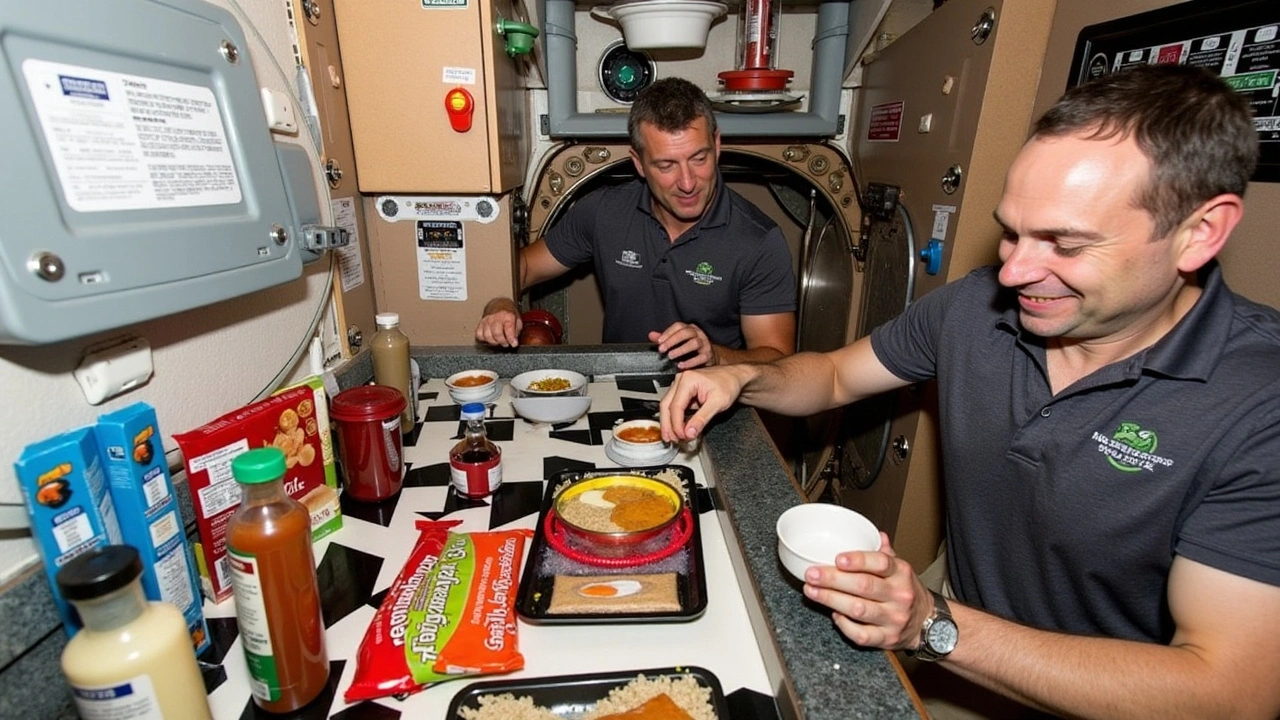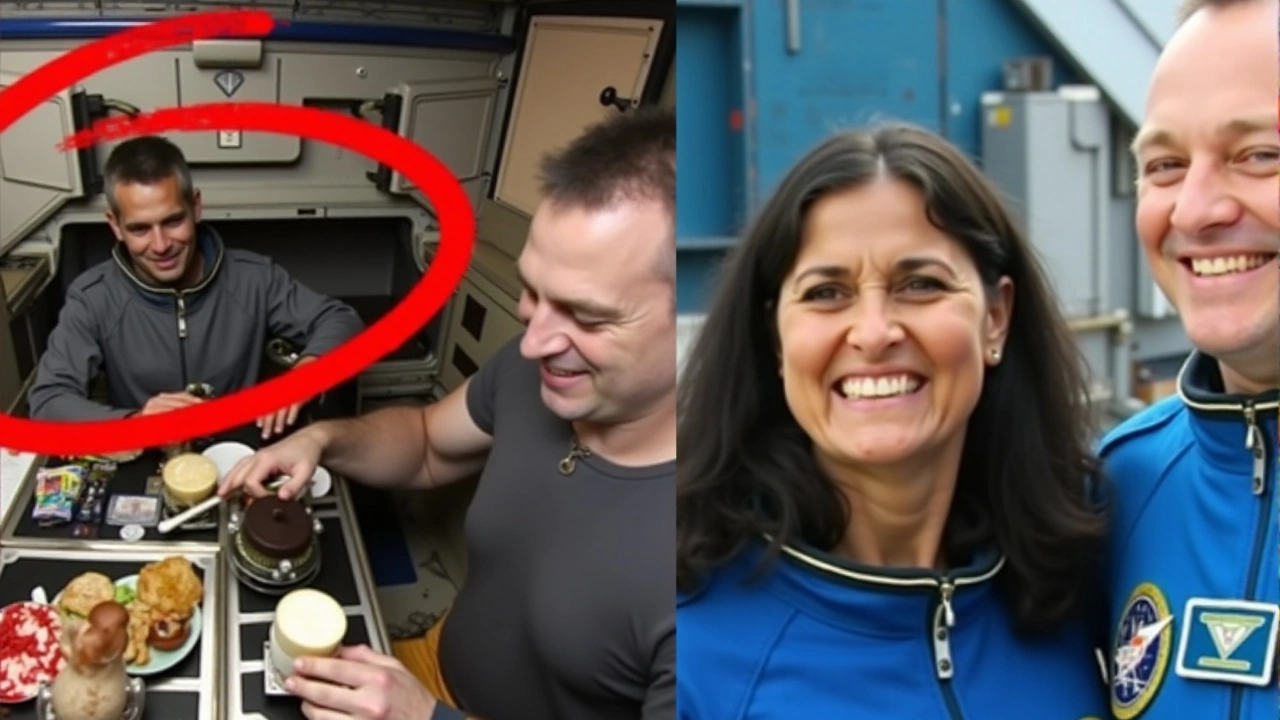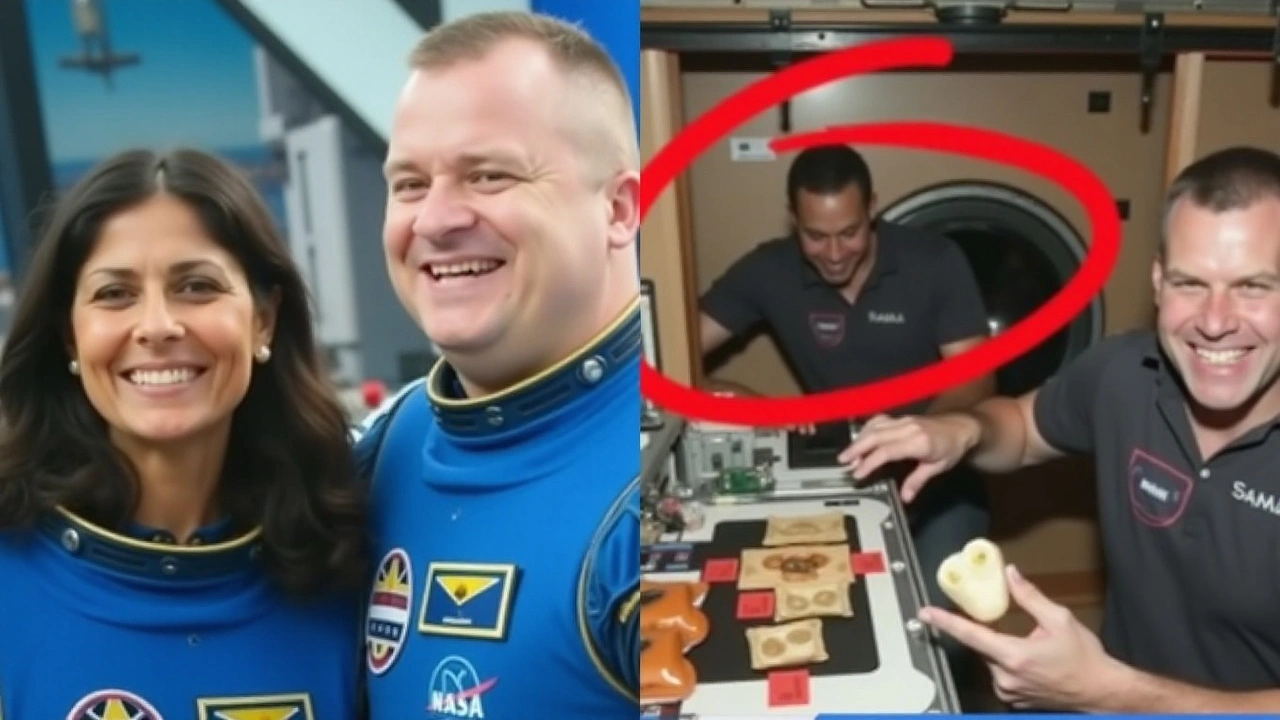Health Challenges for Astronauts in Space
Sunita Williams, an experienced astronaut representing NASA, is currently grappling with significant health concerns as her mission aboard the International Space Station extends well beyond its originally scheduled duration. Williams, alongside fellow astronaut Barry Wilmore, initially embarked on what was expected to be an eight-day mission. However, due to unforeseen technical complications with Boeing's Starliner spacecraft, their stay has elongated to a challenging six months. Recent photographs from the ISS have surfaced, revealing a visibly thinner and more gaunt Williams, prompting experts and enthusiasts alike to express growing concern over her health.
The issues faced by Williams are not unusual for astronauts undergoing extended periods in microgravity. Living in space for extended durations presents unique physiological challenges, foremost among them being the effects of a microgravity environment. This absence of gravity results in muscle atrophy and bone density loss. The cardiovascular and respiratory systems also undergo significant changes, while the body's immune system faces suppression, leaving astronauts vulnerable to illnesses they wouldn't typically encounter on Earth. Furthermore, the microgravity situation complicates nutritional intake and balance, as astronauts often consume fewer calories than they expend, leading to noticeable weight loss over time.
Calorie Deficit and Health Risks
Dr. Vinay Gupta, a pulmonologist based in Seattle, who has been closely monitoring Williams’ condition, raised alarms about her health. Observations note her sunken cheeks and visibly diminished frame suggest a calorie deficit, a condition where her body is burning more energy than she is able to consume. This issue is not uncommon for spacefarers, with previous extended missions highlighting the calorie imbalance that can result from the stressful conditions in space. Dietary challenges are compounded by the need to maintain a balanced intake of nutrients critical for bone health and muscle maintenance in an environment devoid of traditional gravity.
The human body thrives on consistent routines of nutrient intake, exercise, and adequate rest, elements that can be significantly disrupted during space missions. Compromises must be made in food selection to ensure all critical areas are covered, including necessary vitamins and minerals that might otherwise be lacking in space cuisine. As a result, astronauts must adapt their diets meticulously. This becomes even more critical under weightless conditions, where the absorption of nutrients might differ substantially from Earth. NASA is well aware of these challenges, and is striving to provide Williams and her fellow crew not just with the necessary nutrients, but also with daily remote monitoring, ensuring that their unique dietary needs are met through carefully planned food packages.

The Psychological Toll of Extended Space Missions
Beyond the obvious physical implications of an extended stay in microgravity, the psychological demands on astronauts as a result of prolonged space missions cannot be underestimated. The stress of isolation, distance from loved ones, and the unique pressures of living in a cramped space environment take their toll on mental health. Space missions of this nature require individuals to possess remarkable resilience. Yet even the most experienced astronauts, such as Williams, can find these challenges daunting over extended periods.
Nasa acknowledges the strain such missions can place on psychological well-being and has adapted their protocols to help manage and mitigate these effects. Remote psychological support is continuously available to crew members throughout long missions, allowing astronauts to access counseling and support as needed. Psychological checks are routine, and any indicators of stress or anxiety are promptly addressed with personalized interventions to ensure emotional health remains steadfast. Regular communication with family and loved ones is also prioritized where technology and mission timing permit, as a way to foster a sense of connection and support from Earth.
Preparing for Safe Return and Future Missions
Williams and Wilmore's scheduled return to Earth in February aboard SpaceX's Dragon capsule marks a demarcation point in their adventure. However, the conclusion of the mission brings with it another set of rigorous challenges: ensuring a safe and healthy reentry and successful readjustment to Earth's gravity. NASA has developed a comprehensive series of post-flight medical assessments and physical rehabilitation programs to support astronauts as they transition back into Earth's environment, addressing any delayed health impacts from the mission.
The path forward for NASA involves comprehensive learning experiences from extended missions such as this. The organization is committed to refining and enhancing support systems, not only in preparation for the prolonged missions of the future but also mindful of the nuances of human physiology in space. The insights drawn from Williams' and her team's experience will be instrumental in future mission planning, particularly for projects focusing on the Moon, Mars, and beyond.

The Future of Long-Duration Space Travel
NASA's vigilance and commitment to astronaut health are unwavering, underscoring its dedication to advancing human space exploration safely and sustainably. By analyzing the physiological and psychological challenges faced by Williams and her colleagues, NASA is positioned to evolve its strategies and technologies, aiming to mitigate the distress that such missions could impose. Innovative countermeasures are already in consideration, including more sophisticated exercise equipment, optimized dietary plans, and advanced medicinal resources to aid crew in maintaining their physical and mental health.
Given the crucial findings from these prolonged missions, adaptability remains a cornerstone of ongoing and future missions. As humankind endeavors into longer journeys in space, such as missions targeting Mars, these insights will prove invaluable in engineering spacecraft and support systems to foster a healthier, more efficient environment for astronauts braving the final frontier. The journey of Sunita Williams and Barry Wilmore, along with the expertise of NASA and its collaborative partners, propels us toward a more profound understanding of human physiology in space, setting the stage for safe, viable, and increasingly ambitious space exploration in the years to come.


Comments (11)
Wow, the ISS photos really show how grueling space can be 😮! I wonder how the micro‑gravity diet actually works out on a daily basis – do they even get enough calories? The muscle loss stats are scary, but the tech they’re using to counteract it is pretty cool. Do you think future missions will have better food tech, or are we stuck with these compromises for now? 🚀
It's absolutely outrageous that they let an astronaut bleed out on nutrients while the powers that be pretend everything's fine. The same folks who push the “space race” narrative are hiding the truth about how badly the crew is being treated. They claim it’s for science, but it's a cover‑up for a massive health scandal. Everyone should demand transparency before more lives are jeopardized.
When one contemplates the vast silence of the cosmos, the fragile vessel of the human body becomes a metaphor for our own existential condition. It is not merely a matter of muscle atrophy, but an illustration of the impermanence that defines our earthly existence. In the micro‑gravity of the ISS, the astronaut confronts a reality where the usual forces that shape us are suspended, forcing a reevaluation of what sustains life. The psychological strain, too, is a mirror reflecting the isolation we often feel even on our home planet. Yet, within this isolation, a disciplined routine emerges, a testament to human resilience. The body, though gaunt, adapts via specialized exercise regimens, a reminder that adaptation is embedded in our biology. Nutrition, though constrained, is meticulously calculated, reinforcing the notion that even scarcity can be managed with ingenuity. Moreover, the collaborative spirit among crew members underscores the social nature of our species. NASA's monitoring systems serve as a guardian, echoing a parental oversight that ensures safety. As we project forward to Mars, these lessons crystallize into essential design principles for future habitats. The skeletal density loss observed is not just a statistic, but a call to innovate bone‑preserving technologies. Likewise, the cardiovascular changes demand a deeper understanding of fluid dynamics in low‑gravity environments. Psychological support, often overlooked, becomes a beacon of emotional sustenance, illustrating the importance of mental health care in extreme conditions. The collective data harvested from these missions sets a foundation for bio‑engineering breakthroughs. Ultimately, the saga of Sunita Williams is not merely a tale of hardship but a chronicle of human tenacity, adaptation, and the relentless pursuit of knowledge.
I think we should keep supporting the crew
Totally agree the crew needs all the backup we can give
It is commendable that the community expresses concern for the astronauts’ wellbeing. The physiological challenges cited are consistent with established spaceflight research. NASA’s implementation of countermeasure protocols reflects a proactive stance. Continued observation will yield valuable data for future missions. The collaborative effort among international partners enhances the robustness of these measures.
We need to stand up for these astronauts! Their health is being pushed to the edge and it's unacceptable. It's time to demand better support systems and resources. No more compromising on basic nutrition and mental health.
Absolutely, the current mitigation strategies can be enhanced with next‑gen life‑support algorithms and adaptive nutrient delivery systems. By leveraging closed‑loop bioregenerative technologies, we can ensure macronutrient equilibrium without overburdening payload capacities. This approach not only boosts astronaut resilience but also optimizes mission sustainability.
The intricate interplay between microgravity‑induced osteopenia and the limited caloric intake creates a cascade of physiological stressors that extend beyond mere muscle wasting and venture into the realm of systemic metabolic dysregulation you see how each component feeds into the other and amplifies the overall health risk profile for long‑duration crew members it becomes evident that a holistic, interdisciplinary approach is essential to address these challenges effectively and sustainably rather than relying on isolated countermeasures the integration of advanced exercise physiology, nutritional biochemistry, and psychosocial support frameworks offers a promising pathway forward for future deep‑space endeavors
Hey folks, love the deep dive! It's amazing how much we learn from each mission. Keep the discussion buzzing!
These space agencys are just hideing the truth they are sacrificng lives for propaganda and its a huge sceme